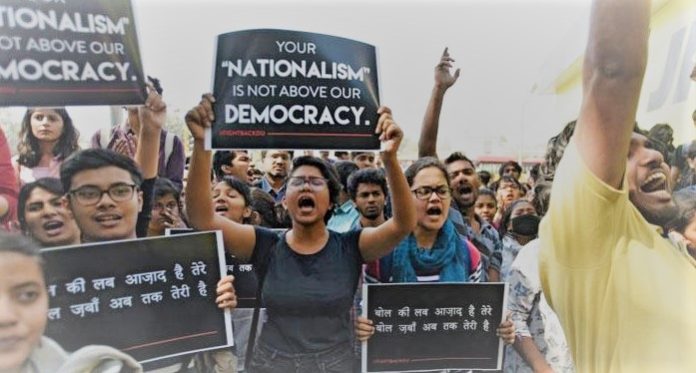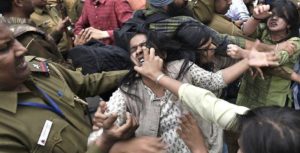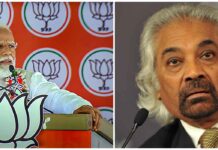The Ramjas College ruckus: ABVP or AISA who is to be blamed for??!
College campuses are the ground for building the futures of the nation, to shape ideologies of the students and to make them responsible citizens of the country.
The recent incident of the violence episode on the Ramjas college campus was a major cause of disappointment and a wrong example to the youth of the nation. The lecture cum discussion on the topic, ‘Culture of protests’ has turned out to be a practical lesson for the political science students. Who is to be blamed for the incident? ABVP or AISA or the college authorities for organizing such an event. Whether calling Umar Khalid for participating in the conference was justified?
The invitation of the Umar Khalid, a student of JNU who was charged of sedition on shouting anti-national slogans and being a pro-Kashmir volunteer, is actually considered as the main cause for the incident which led the ABVP hosted protesting. Though I am definitely not in support of the ABVP for its violent methods of protests, the college authorities equally seem to be responsible for the confrontation. Well, promoting the anti national sentiments does not seem to be a working idea in a vast country like India. It is not easy to bring out the Unity in Diversified Indian culture.
Whereas on this issue, the professors of the colleges are divided into two segments over the issue in the guise of protecting the academic freedom. Some professors have expressed that such incidences will lead to reluctance in expressing views on various subjects as it might hurt the sentiments of certain sections of the society. Considering it a threat to their academic freedom and open discussions to enhance the knowledge of the students, they have condemned ABVP for their action. While some of the professors were against the violence on campus while at the same time were against the promotion of the anti national sentiments among the youth too.
Though all the statements are justified, only one question haunts my mind as to what were the college authorities thinking while inviting Umar Khalid for the conference. It is a well known fact that the radical approach of left wing ideology students are creating, does not gel well with the remaining society. Further, at any pint of time, has JNU, the left wing hub have welcomed the right wing or other ideologies for their conferences or seminars. The answer is no. We all would love to see the making of an egalitarian society, but in my opinion, the radical left wing strategy cannot shape the right future of our society. We would like our youth to be open minded and welcoming to any idea for development.
Further, if one looks for the role models for ‘Cultures of Protests’, since time immemorial, where the cause of the protest is noteworthy and ethical. It sounds exactly opposite to the thoughts of Kanhaiya Kumar and Umar Khalid who are the profounder of anti national sentiments by promoting Afzal Guru, who attacked the Parliament and killed many innocents. Was inviting Umar Khalid so necessary that the college authorities could put the security of campus at stake. Why did the college authorities could not foresee the implication of their actions? I think we must give it a thought.
Many of the students as well as spectators have pointed out towards the breach of right to freedom of expression by not allowing Umar Khalid to speak in Delhi University. But they must note that the freedom of expression comes to us with certain responsibilities breaching which will take away the right, one such restriction to expression is it should go off well with the sovereignty and integrity of India.
It is also a well known fact that the political parties of the country have been seen influencing the student’s union related to their political party. Universities and college campuses must not be involved in the dirty politics and the student unions must not be given the colour of politics in order to allow the broad thinking of the youth to blossom.
























